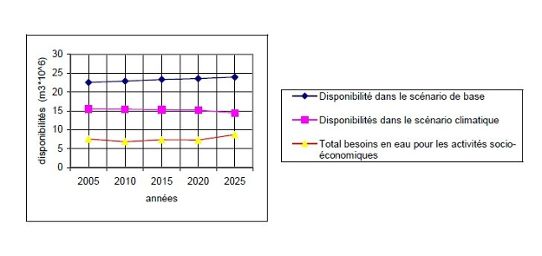Background
Water resources drive development at country level in Sahel in general and in Mali in particular, where the economy is mainly dominated by agriculture, livestock and fishing. Climate deterioration due to poor distribution of rainfall, repeated droughts and watercourses drying up has
put a serious strain on these resources in recent years. In order to deal with these adverse climate effects, it is essential to evaluate their extent at local level, i.e. down to subriver basin level.
Description
In this study, a simulation model for water flows in the basin of the study area called RAINRU was calibrated using historical rainfall data.
An evaluation of all potential surface water and groundwater resources was then carried out. This available potential was compared with the total water needs of the various socioeconomic sectors, such as agriculture, livestock, fisheries, the populations’ drinking water needs and energy
production.
The comparison confirmed the existence of enormous potential water resources compared to current needs, which are significantly lower.
To assess the potential impact of climate change on these water resources, the analysis compared the impacts in the baseline scenario (i.e. from a no climate change perspective) and in a scenario with climate change, the climate parameter values for which were taken from the study on the development of climate scenarios produced for Mali. This highlights, for different time horizons, the existence of impacts (adverse effects) in all socioeconomic sectors in the event that the forecasts included in this climate scenario are realised.
Adaptation measures to mitigate the adverse effects of climate change were then proposed.
In terms of results, the comparison between water needs in the basin and availability in the case of the two climate scenarios are as follows:

Impact
The results of the study were shared with the Water Management Commission for the Sélingué Reservoir and the Markala Dam (CGESM), a framework for dialogue between various IWRM stakeholders. The National Water Directorate chairs the CGESM, and the Rural Development Office of Sélingué (ODRS) ensures the involvement of users of the irrigated areas. They each developed an action plan to implement the study’s recommendations regarding the impacts of climate change on agriculture,
livestock, fishing and electricity production in Sélingué.
Lessons learned
To carry out such a project, future researchers must ensure that they have data for their study area over a long period of time and, if necessary, must have a needs assessment tool such as the WEAP (Water Evaluation and Planning) model.relation to climate change.